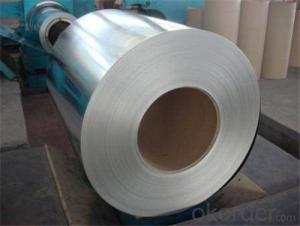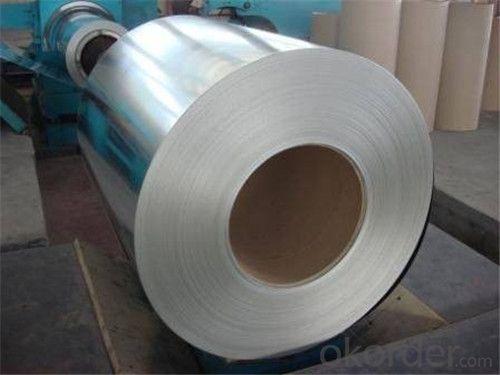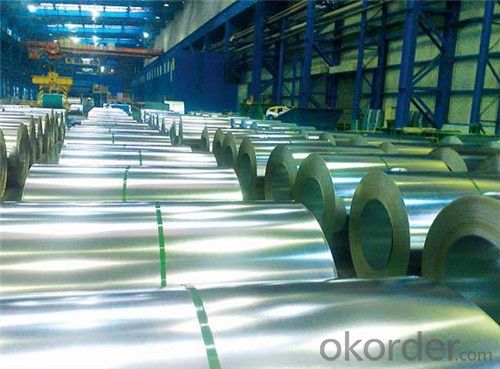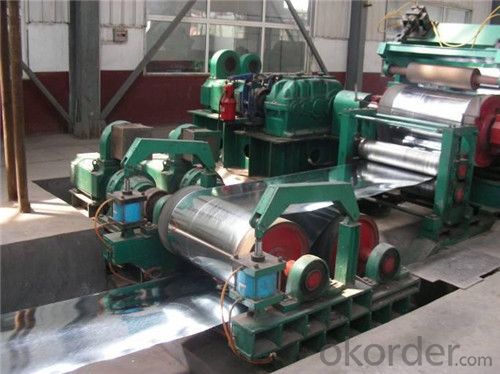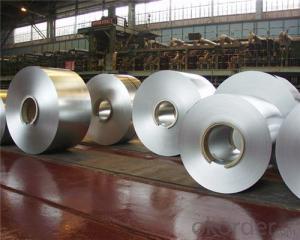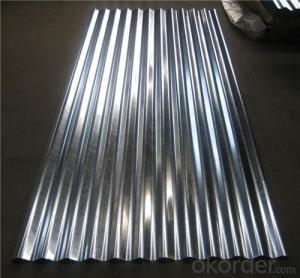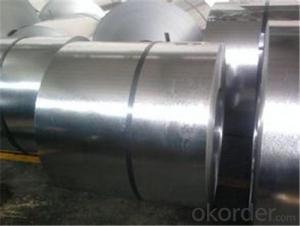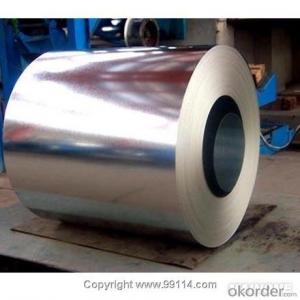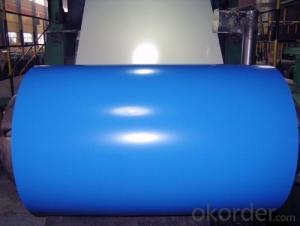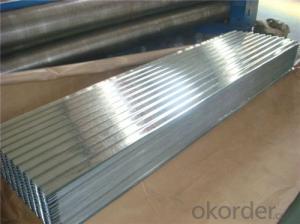cold rolled steel coil for building roof
- Loading Port:
- Shanghai
- Payment Terms:
- TT OR LC
- Min Order Qty:
- 36 m.t.
- Supply Capability:
- 30000 m.t./month
OKorder Service Pledge
OKorder Financial Service
You Might Also Like
Specifications
1.Standard:AISI,BS,DIN,GB,JIS
2.Material:Q195/Q195L/st12/dc01/spcc
3.Thickness:0.2--2.5mm
Description Of Cold Rolled Coil
1.Standard:AISI,BS,DIN,GB,JIS
2.Material:Q195,Q195L,SPCC,08AL or as requirement
3.Thickness:0.2mm--2.5mm
4.Width: 600mm--1250mm
5.Length: coil, as required
Item | Cold Rolled Steel Coil/Plate/Sheet |
Description | Steel sheet, steel plate, steel coil, cold rolled steel sheet or coil |
Standard | ASTM,AISI,SUS,JIS,EN,DIN,BS,GB |
Material | Q195,Q195L,SPCC,08AL or as requirement |
Export to | USA,UAE,Europe,Asia,Middle East,Africa,South America |
Thickness | 0.2mm--2.5mm |
Width | 600-1250mm |
Length | usually 950-6000mm for sheet, or as required |
Application | cold rolled steel coil/sheet applies to construction field, ships building industry, petroleum & chemical industries, war and electricity industries, food processing and medical industry, boiler heatexchanger, machinery and hardware fields. Stainless steel sheet can be made accordingto the customers requirements. Fast delivery. Quality assured.Welcome to order more. |
Packaging | Standard seaworthy package(wooden boxes package,pvc package, and other package) |
Delivery Time | According to your size and quantity or as customers require |
Payment Term | T/T ,30% as advanced,70% will be paid before shipments |
Advantage | Good quality with reasonable price |
- Q: How many percent carbon in low alloy steel and high alloy steel
- Steel is basically an alloy of iron and carbon that has more than 0% carbon and less than 2% carbon. The alloy of carbon and iron with more than 2% carbon is considered cast iron. The bessemer process converts cast iron to steel by injecting oxygen into molter cast iron to burn off the excess carbon. Steel is also modified by adding additional elements like silicon, molydenum, vanadium, chrome, etc.
- Q: What are the pros with stainless steel? You don't have to oil them as much or you don't have to oil them at all?Is the rifling in the barrel typically stainless steel as well? if so, is this better accuracy or does the rifling last longer then conventional?are they worth the extra money?Thanks for any info you can provide!
- The other posters here have already covered the pros of stainless steel firearms. I think they are just fine and actually require less maintenance. But, allow me to add one negative note about stainless. It may seem minor, but I have personally had an issue with it. Stainless steel will reflect sunlight and other light sources. I recall a few occassions when I was shooting my Ruger Red Label, that only has a dull finished stainless steel receiver, where the sun was starting to set in the evening and the sunlight was reflecting off the very small portion of receiver that was in my light of sight - and it was blinding! Another time I was shooting a nickle plated SW revolver and the same thing happened (nickle is obviously very similar to polished stainless steel). It was like I was holding a mirror in my hands and the sunlight reflecting off of the surfaces of the revolver made it impossible to sight the gun. Also, stainless steel or nickle sights on any handgun or rifle are useless - you need either black or other colored ramps and rear sights. (The only excpetion being the small bead sights on the front of shotguns, which are used as a reference point only and are usually a dull silver finish.)
- Q: How are steel coils inspected for surface cleanliness?
- Steel coils are inspected for surface cleanliness through a variety of methods including visual inspection, magnetic particle inspection, and ultrasonic testing. Visual inspection involves visually examining the surface for any visible contaminants or defects. Magnetic particle inspection uses magnetic fields and particles to detect surface defects such as cracks or flaws. Ultrasonic testing uses high-frequency sound waves to detect any subsurface defects or irregularities. These inspection methods ensure that the steel coils meet the required standards of cleanliness and quality.
- Q: How are steel coils processed for different finishes?
- Steel coils are processed for different finishes through various techniques such as hot rolling, cold rolling, pickling, and coating. Hot rolling involves heating the steel coils and passing them through rollers to achieve desired thickness and shape. Cold rolling further enhances the surface finish by reducing thickness and increasing strength. Pickling involves removing impurities and scale from the surface of the steel coils using acid solutions. Finally, coating techniques like galvanization or painting are used to provide protective and decorative finishes to the steel coils.
- Q: ok I got a dpms ar 15 and all i have put though it is good brass 223 ammo but is it ok to shoot the old crappy steel cased wolf ammo out of it will it hurt its function or will it hurt it cosmetically?
- Overall it's dirtier. In this age however it's also cheaper. So if you need to stock up. In case. It's still a good option. Fire your brass first.
- Q: How are steel coils used in the production of pressure vessels?
- Steel coils are used in the production of pressure vessels as they provide a strong and durable material for constructing the vessel's shell. The coils are typically formed and welded to create the cylindrical shape of the vessel, ensuring it can withstand high pressure and contain fluids or gases safely.
- Q: Can steel coils be bent or shaped?
- Yes, steel coils can be bent or shaped. Steel coils are flexible and can be easily manipulated into various forms or shapes through processes like bending, rolling, or stamping.
- Q: What are the different coil packaging options available for steel coils?
- There are several different coil packaging options available for steel coils, depending on the specific requirements and preferences of the customers. Some of the commonly used packaging options include: 1. Steel Strapping: This is a traditional method of packaging steel coils, where a high-tensile steel strap is used to secure the coil. It provides excellent stability and protection during transportation and storage. 2. Plastic Strapping: Plastic strapping is a more cost-effective and lightweight alternative to steel strapping. It is commonly used for smaller and lighter steel coils, providing adequate strength and protection. 3. Shrink Wrapping: Shrink wrapping involves covering the steel coil with a plastic film and then applying heat to shrink and tightly seal the film around the coil. This packaging method offers protection against moisture, dust, and other contaminants. 4. Wooden Crates: Steel coils can also be packaged in wooden crates, which provide additional protection against physical damage during handling and transportation. Wooden crates can be customized to fit the specific dimensions of the coil and can be easily secured with straps or nails. 5. Coil Covers: Coil covers are large, heavy-duty plastic or fabric covers that are placed over the steel coil to protect it from environmental factors such as UV exposure, moisture, and dust. They are often used in combination with other packaging methods for added protection. 6. Paper or Fiberboard Wrapping: This packaging option involves wrapping the steel coil with paper or fiberboard material. It provides a lightweight and cost-effective solution for protecting the coil against minor scratches and abrasions. 7. Customized Packaging: Depending on the specific requirements of the customer, steel coils can be packaged using a combination of the above options or customized packaging solutions. This may include additional padding, corner protectors, or special handling instructions to ensure the safe transportation and storage of the coils. It is important for customers to consider factors such as coil size, weight, transportation mode, storage conditions, and budget when choosing the most suitable coil packaging option for their specific needs.
- Q: How are steel coils used in the production of electrical transmission poles?
- The production of electrical transmission poles relies heavily on steel coils, which are crucial for their strength and durability. These coils, made from high-quality steel, are used to create the poles' main body. They are unrolled and shaped into large cylindrical sections, which are then welded together to form the structure of the pole. This manufacturing process allows for the customization of poles in terms of length, diameter, and wall thickness to meet specific transmission requirements. The utilization of steel coils guarantees that transmission poles possess the necessary structural integrity to withstand demanding conditions such as heavy electrical conductors and environmental factors like wind, ice, and seismic activities. Steel, known for its high strength-to-weight ratio, is an ideal material for these poles as it provides the required strength while keeping the overall weight of the pole relatively low. Furthermore, steel coils also serve in the fabrication of flanges and brackets that attach to the poles. These components are essential for securing and supporting electrical conductors and insulators on the poles. By using steel coils, flanges and brackets can be manufactured with precise dimensions and strength, ensuring a secure and reliable connection between the electrical components and the transmission poles. Apart from their structural advantages, steel coils also offer excellent resistance to corrosion. This characteristic is particularly important for electrical transmission poles, which are exposed to harsh weather conditions and corrosive environments. To enhance the lifespan of the poles, steel coils are typically coated with protective layers such as zinc or epoxy to prevent rust and corrosion. To summarize, steel coils play a vital role in the production of electrical transmission poles. They are used to fabricate the main body of the poles, as well as the flanges and brackets that secure the electrical components. With their high strength, durability, and corrosion resistance, steel coils ensure that transmission poles can safely and reliably support electrical conductors for efficient electricity transmission.
- Q: How are steel coils used in the manufacturing of automotive components?
- Steel coils are used in the manufacturing of automotive components as they serve as the primary raw material for producing various parts such as car bodies, chassis, and engine components. The coils are processed through a series of manufacturing techniques, including cutting, shaping, and welding, to transform them into specific automotive components. The high strength and durability of steel make it an ideal choice for these applications, ensuring the structural integrity and safety of the final automotive products.
Send your message to us
cold rolled steel coil for building roof
- Loading Port:
- Shanghai
- Payment Terms:
- TT OR LC
- Min Order Qty:
- 36 m.t.
- Supply Capability:
- 30000 m.t./month
OKorder Service Pledge
OKorder Financial Service
Similar products
Hot products
Hot Searches
Related keywords
